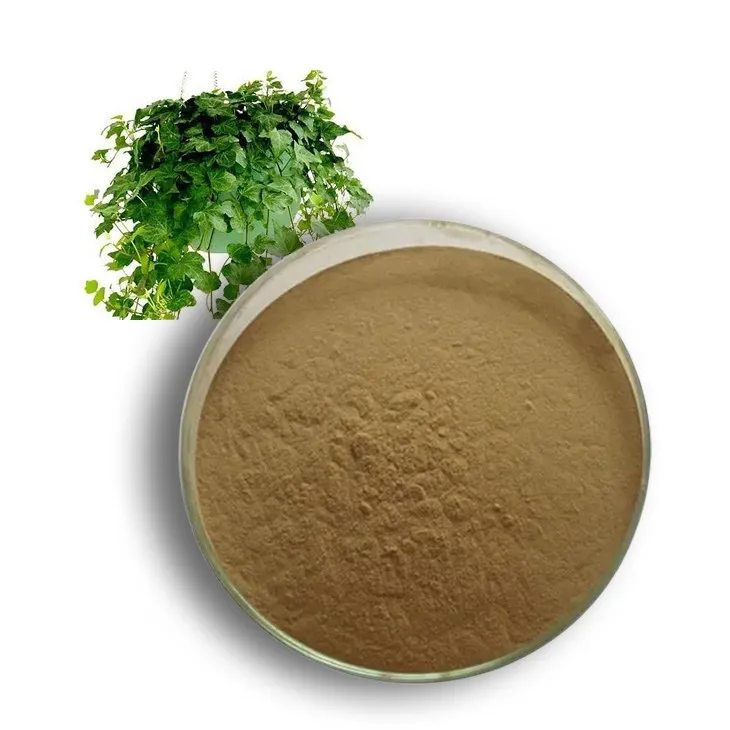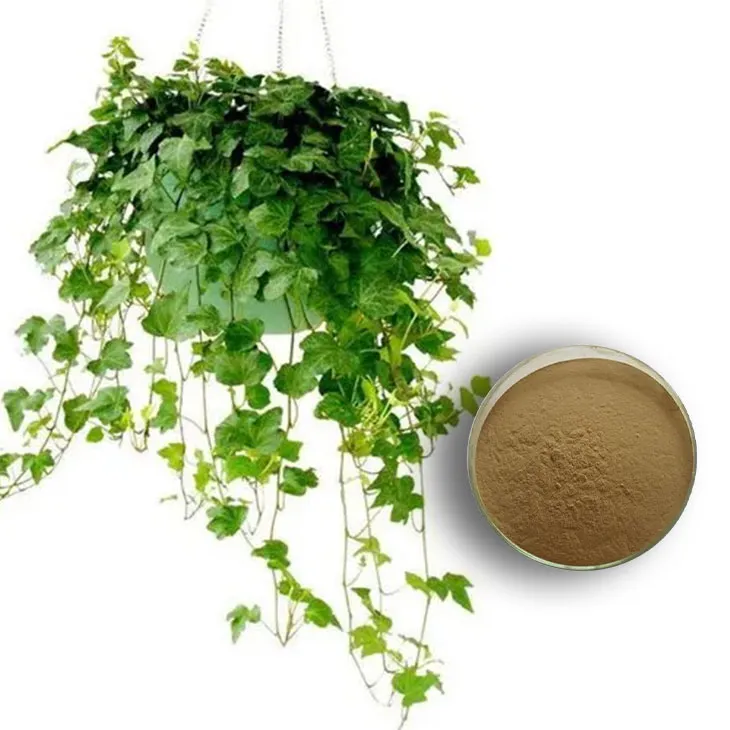- 0086-571-85302990
- sales@greenskybio.com
Supercritical Carbon Dioxide Extraction of Ivy Extract.
2024-11-30

1. Introduction
The extraction of natural products has always been an area of great interest in various industries, such as medicine, cosmetics, and food. Ivy plants are one such natural source that holds significant potential. Supercritical carbon dioxide extraction of Ivy Extract is an innovative and efficient method. It has emerged as a powerful tool in the extraction of valuable compounds from ivy plants.

2. The Ivy Plant as a Source of Bioactive Compounds
Ivy plants are rich in a variety of bioactive compounds. These compounds play important roles in different applications.
2.1 Chemical Composition
Ivy contains alkaloids and terpenoids among other substances. Alkaloids are known for their potential pharmacological activities, such as acting on the nervous system or having antimicrobial effects. Terpenoids, on the other hand, often exhibit antioxidant, anti - inflammatory, and antimicrobial properties. These components make ivy a valuable plant for extraction.
2.2 Traditional and Modern Applications
In traditional medicine, ivy has been used for centuries. For example, it has been used in the treatment of respiratory problems like coughs and colds. In modern medicine, researchers are exploring the potential of ivy - derived compounds for the development of new drugs. In the cosmetic industry, Ivy Extracts are being investigated for their ability to improve skin health.

3. Supercritical Carbon Dioxide Extraction: An Overview
Supercritical carbon dioxide extraction is a unique and advanced extraction technique.
3.1 The Supercritical State of Carbon Dioxide
Carbon dioxide (CO₂) has a critical point, which is the combination of a specific temperature and pressure. When CO₂ is in its supercritical state, it exhibits properties that are intermediate between a gas and a liquid. It has a high diffusivity like a gas, allowing it to penetrate the plant material easily. At the same time, it has a density similar to that of a liquid, which enables it to dissolve a wide range of substances effectively.
3.2 Advantages over Traditional Extraction Methods
- Selectivity: Supercritical CO₂ extraction can be more selective compared to traditional solvent extraction methods. It can be adjusted to target specific compounds in the ivy plant, leaving behind unwanted substances.
- No Residual Solvent: One of the major advantages is that there is no residual solvent in the final extract. In traditional extraction methods using organic solvents like ethanol or hexane, there is a risk of solvent residue remaining in the extract, which may be harmful or require additional purification steps.
- Mild Conditions: The extraction process occurs under relatively mild temperature and pressure conditions. This helps to preserve the integrity of the bioactive compounds in the ivy. In contrast, some traditional extraction methods may require high temperatures or harsh chemicals that can degrade the active molecules.

4. The Process of Supercritical Carbon Dioxide Extraction of Ivy Extract
4.1 Pretreatment of Ivy
Before the extraction process, the ivy plants need to be properly pretreated. This may involve cleaning to remove dirt and other impurities. The plants may also be dried or cut into smaller pieces to increase the surface area available for extraction.
4.2 Extraction Parameters
- Temperature: The temperature is an important parameter in supercritical CO₂ extraction. It affects the solubility of the compounds in the ivy. A suitable temperature range needs to be determined based on the nature of the target compounds. For example, a temperature that is too high may cause the degradation of some heat - sensitive compounds.
- Pressure: Pressure also plays a crucial role. Different pressures can result in different extraction efficiencies. Higher pressures generally increase the solubility of the compounds in supercritical CO₂, but there is a limit beyond which the equipment may be put under excessive stress.
- Flow Rate of CO₂: The flow rate of supercritical CO₂ through the extraction chamber influences the extraction time and the amount of extract obtained. A proper flow rate needs to be optimized to ensure efficient extraction without wasting excessive amounts of CO₂.
4.3 Separation and Collection of the Extract
After the extraction, the supercritical CO₂ containing the dissolved ivy compounds needs to be separated from the extract. This is typically done by reducing the pressure, which causes the CO₂ to return to its gaseous state, leaving behind the extract. The extract is then collected for further analysis or use.
5. Applications of Ivy Extract Obtained by Supercritical Carbon Dioxide Extraction
5.1 In Medicine
- Respiratory Health: As mentioned earlier, ivy has a long - standing use in treating respiratory ailments. The extracts obtained through supercritical CO₂ extraction can be used in the formulation of modern medications for coughs, colds, and other respiratory conditions. The bioactive compounds in the extract may help to soothe the airways, reduce inflammation, and relieve coughing.
- Potential in Drug Development: Researchers are exploring the potential of ivy - derived compounds for the development of new drugs. For example, the alkaloids and terpenoids in the extract may have properties that can be exploited for the treatment of more complex diseases, such as certain types of cancer or neurodegenerative disorders.
5.2 In the Cosmetic Industry
- Skin Rejuvenation: Ivy extracts are rich in nutrients and antioxidants. These components are beneficial for skin health. When used in body lotions and facial creams, they can help to improve skin firmness and elasticity. They can also protect the skin from oxidative damage caused by free radicals, which is associated with aging.
- Anti - Inflammatory Properties: The anti - inflammatory properties of ivy extracts can be utilized in cosmetic products. Inflammation can lead to various skin problems, such as acne and redness. By incorporating ivy extracts, cosmetic products can help to reduce inflammation and promote a more even - toned skin.
6. Quality Control and Standardization of Ivy Extract
6.1 Analytical Methods
To ensure the quality of the ivy extract obtained through supercritical CO₂ extraction, various analytical methods are employed.
- Chromatographic Techniques: High - performance liquid chromatography (HPLC) and gas chromatography (GC) are commonly used to analyze the chemical composition of the extract. These techniques can separate and identify the different compounds present in the extract, allowing for the determination of the purity and concentration of the active ingredients.
- Spectroscopic Methods: Spectroscopic techniques such as infrared spectroscopy (IR) and ultraviolet - visible spectroscopy (UV - Vis) can provide information about the functional groups and chemical bonds in the extract. This helps in the identification and characterization of the compounds.
6.2 Standardization
Standardization of the ivy extract is crucial for its consistent use in different applications. This involves setting standards for the content of key bioactive compounds. For example, in the case of ivy extracts used in medicine, there may be specific requirements for the concentration of alkaloids or terpenoids. In the cosmetic industry, standards may be set for the antioxidant activity or the amount of certain nutrients in the extract.
7. Future Perspectives
7.1 Research and Development
There is still much research to be done in the area of supercritical CO₂ extraction of ivy extract. Future studies could focus on optimizing the extraction process further to increase the yield and purity of the extract. Additionally, more research is needed to fully understand the potential health benefits of the compounds in the ivy extract.
7.2 Industrial Expansion
As the demand for natural products in medicine and cosmetics continues to grow, the supercritical CO₂ extraction of ivy extract has the potential for industrial expansion. However, this will require the development of more cost - effective extraction processes and the establishment of reliable supply chains for ivy plants.
FAQ:
What are the advantages of supercritical carbon dioxide extraction for ivy extract?
Supercritical carbon dioxide extraction is a gentle method. It can preserve the integrity of the active molecules in ivy. The supercritical state of carbon dioxide enables it to effectively penetrate plant cells and extract a wide range of substances like alkaloids and terpenoids present in ivy.
What bioactive compounds can be extracted from ivy using supercritical carbon dioxide?
Alkaloids and terpenoids are among the bioactive compounds that can be extracted from ivy using supercritical carbon dioxide.
What are the potential applications of ivy extract obtained by supercritical carbon dioxide extraction in medicine?
The ivy extract can be used in the formulation of herbal tinctures for treating coughs and colds.
How can ivy extract obtained by supercritical carbon dioxide extraction be used in the cosmetic industry?
Ivy extracts obtained via supercritical CO2 extraction can be used in body lotions and facial creams to enhance skin firmness and elasticity, because they are rich in nutrients and antioxidants beneficial for skin rejuvenation.
Why is ivy considered a valuable source for extraction?
Ivy is considered a valuable source because it contains a variety of bioactive compounds that can be extracted and used in different industries such as medicine and cosmetics.
Related literature
- Supercritical Fluid Extraction of Bioactive Compounds from Ivy: A Review"
- "The Role of Supercritical Carbon Dioxide in Extracting Ivy Extracts for Therapeutic Applications"
- "Ivy Extracts Obtained by Supercritical CO2: Properties and Potential in Cosmetic Formulations"
- ▶ Hesperidin
- ▶ citrus bioflavonoids
- ▶ plant extract
- ▶ lycopene
- ▶ Diosmin
- ▶ Grape seed extract
- ▶ Sea buckthorn Juice Powder
- ▶ Beetroot powder
- ▶ Hops Extract
- ▶ Artichoke Extract
- ▶ Reishi mushroom extract
- ▶ Astaxanthin
- ▶ Green Tea Extract
- ▶ Curcumin Extract
- ▶ Horse Chestnut Extract
- ▶ Other Problems
- ▶ Boswellia Serrata Extract
- ▶ Resveratrol Extract
- ▶ Marigold Extract
- ▶ Grape Leaf Extract
- ▶ blog3
- ▶ Aminolevulinic acid
- ▶ Cranberry Extract
- ▶ Red Yeast Rice
- ▶ Red Wine Extract
-
Kelp Extract Powder
2024-11-30
-
American Ginseng Root Extract
2024-11-30
-
Sea buckthorn Juice Powder
2024-11-30
-
Buckthorn bark extract
2024-11-30
-
Artichoke Extract
2024-11-30
-
Bamboo Leaf extract
2024-11-30
-
Black Pepper Extract
2024-11-30
-
Lavender Extract
2024-11-30
-
Aminolevulinic acid
2024-11-30
-
Polygonum Cuspidatum Extract
2024-11-30





















